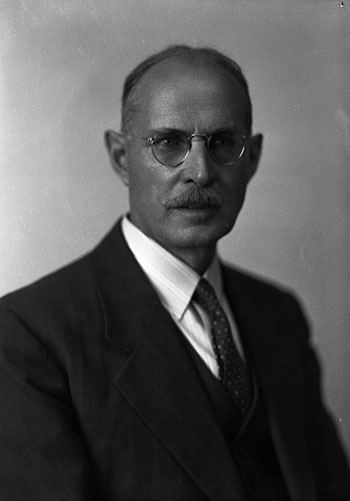Frederick Gage Todd National Historic Person (1876-1948)

© Archives de la Ville de Montréal | City of Montréal Archives / CA M001 VM094-Y-1-17-D1041
Frederick Gage Todd was Canada's first professional landscape architect. He learned his craft apprenticing at the celebrated Olmsted firm of Boston and popularized the idea of naturalistic open space in Canadian cities. Todd designed some of the country's most beloved urban parks, including Assiniboine Park in Winnipeg (1904-06), Bowring Park in St. John's, Newfoundland (1912-14), and National Battlefields Parks (Plains of Abraham) in Québec City. He was Canada's leading exponent of the Garden City planning model and a master of City Beautiful and Garden City approaches to community planning; he created sophisticated plans for the Town of Mount Royal (1914) and Coldbrook Garden City near Saint John, New Brunswick (1913). Todd's 1903 plan for Ottawa influenced every subsequent plan for the capital and was the first to outline its most salient features: the driveway system, the concept of Gatineau Park, the importance of waterways and the symbolism of Parliament Hill.
Born in 1876 in Concord, New Hampshire, Todd studied site engineering, botany, biology, and agriculture at the Massachusetts Agricultural College (now the University of Massachusetts at Amherst). In 1896, a year before graduation, he joined Olmsted, Olmsted, and Elliot, launching his career in the firm's Brookline, Massachusetts office. He moved to Montréal in 1900 to supervise the construction of Mount Royal Park. Shortly thereafter, he married Montrealer Beatrice Evelyn Pinkerton and established his own landscape architecture firm in the city.
Following a period of productive work on urban parks, residential suburbs, and urban plans in the beginning of the 20th century, Todd's career enjoyed a renaissance during the 1930s and 1940s. He continued his work on the Plains of Abraham design for National Battlefields Park, on Mount Royal Park (with the creation of Beaver Lake), and in Maisonneuve, with the design of Morgan Boulevard. The landscaping of St. Helen's Island, a recreational park on an island facing downtown Montréal, was a new project that prefigured the Île Notre-Dame Beach Park, which opened in 1990. In this project and others, Todd's designs continued to exert an influence after his death.
In addition to his busy practice, Todd was an advocate for the professions of landscape architecture and city planning. He was a founder of the Town Planning Institute of Canada and the Canadian Society of Landscape Architects and Town Planners. As the representative of the Civic Improvement League on the Montréal City Council for eight years, he helped forge policies that shaped the city that he adopted decades before while working on the iconic open space of the city: Mount Royal Park.
Over the course of his lifetime, Todd made an outstanding contribution to Canada's urban and suburban landscapes. He lived in Montréal until his death in 1948 and is buried in Mount Royal Cemetery.
The National Program of Historical Commemoration relies on the participation of Canadians in the identification of places, events and persons of national historic significance. Any member of the public can nominate a topic for consideration by the Historic Sites and Monuments Board of Canada.
- Date modified :